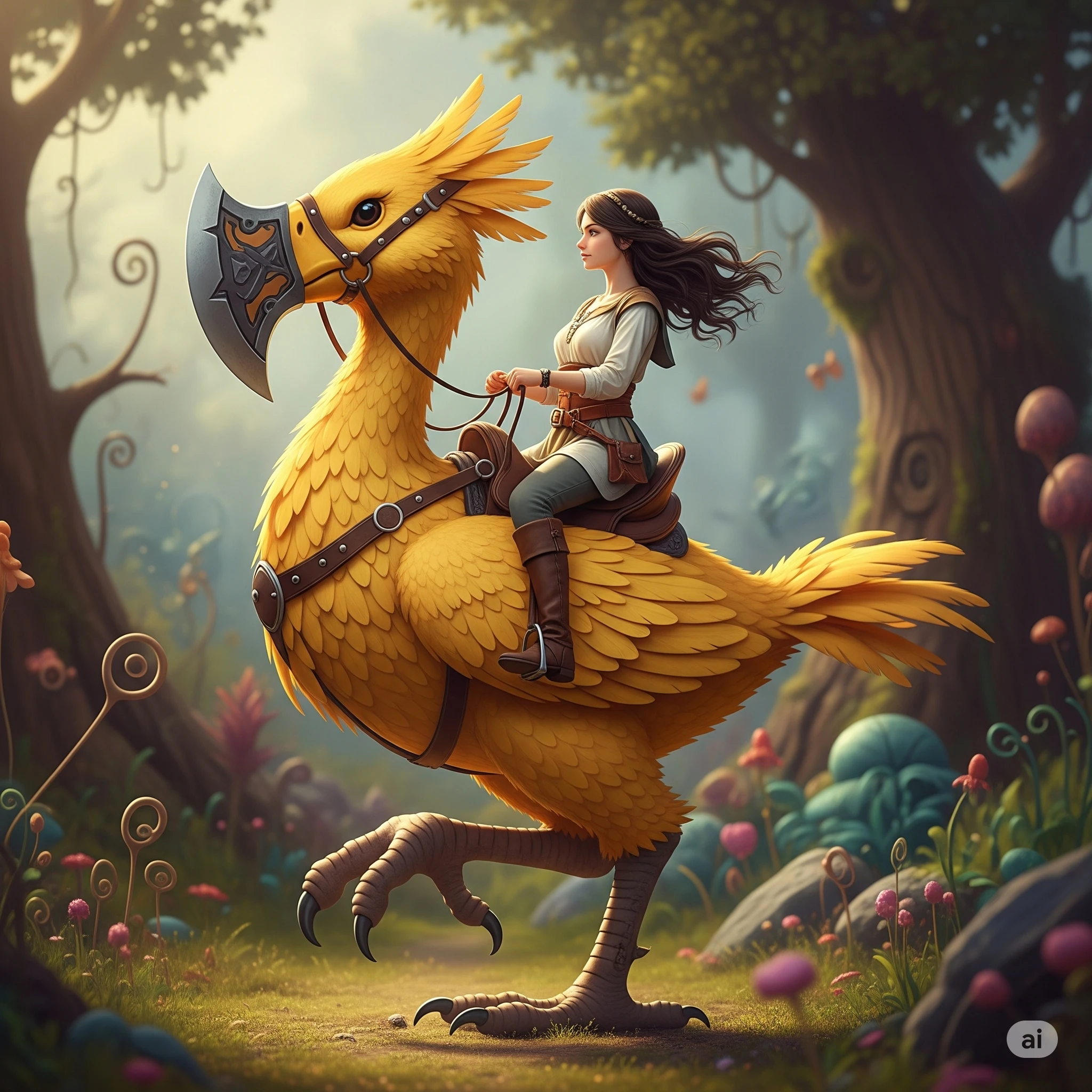East Pyrhian Axe Beak
Basic Information
Anatomy
The name "axe beak" comes from the bird's distinctive axe-shaped beak. Though not as sharp as a real, honed axe, it can still pack quite a punch. An axe beak will use its beak to defend itself, using its neck's leverage and strong muscles to swing it with tremendous force while running at high speeds.
The east Pyrhian variety of axe beak tends to have more yellow or pale-yellow plumage than other species, possibly an evolutionary adaptation to the yellower grass of the eastern region of the Pyrhian Union.
Additional Information
Social Structure
Axe beaks tend to stick congregate in flocks, sizing anywhere from 4 to dozens at a time, depending on the region, time of year, and temperament of those animals. Flocks are generally led by the strongest mating pair within a flock, though interloper individuals have been known to challenge for dominance or membership within a flock. This hierarchy within a flock is decided by competitive sparring matches between axe beaks, using their necks and beaks, in a similar fashion to herds of goats or sheep. It's not uncommon to be able to identify the leader of a flock both by strength of appearance, and by scars or chips on their beak.
Domestication
Similar to horses, branches of east Pyrhian axe beaks have been domesticated to act as mounts and pack animals. Domesticated axe beaks tend to have thicker legs and smaller wings than their wild counterparts.
Facial characteristics
Axe-shaped beak
A tall bird, with long muscular neck and legs, and small wings
Pale yellow to yellow feathers



